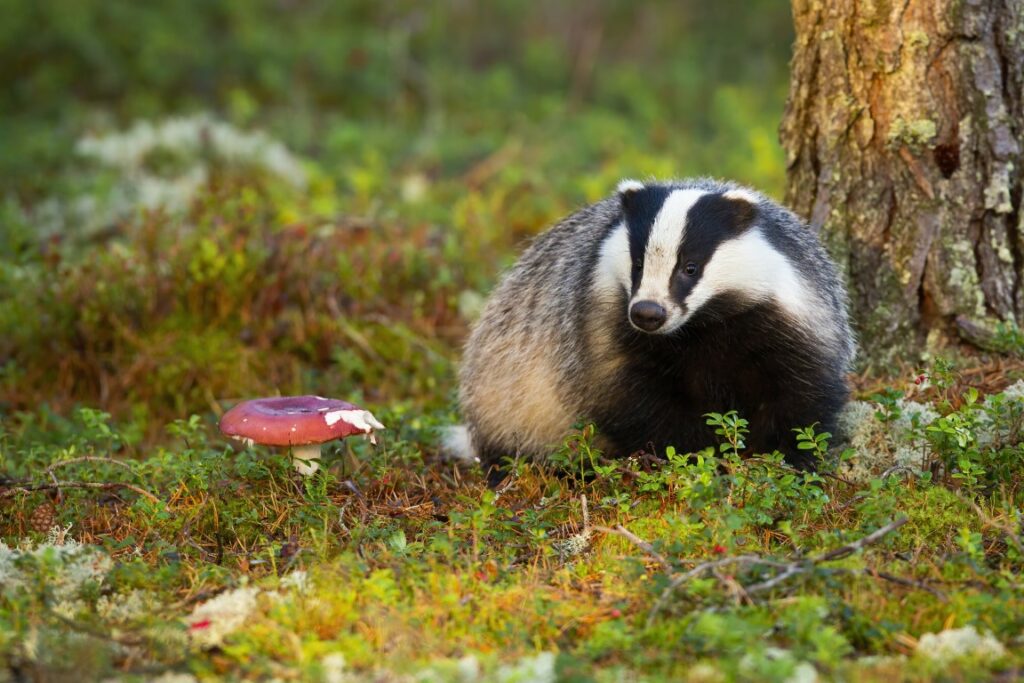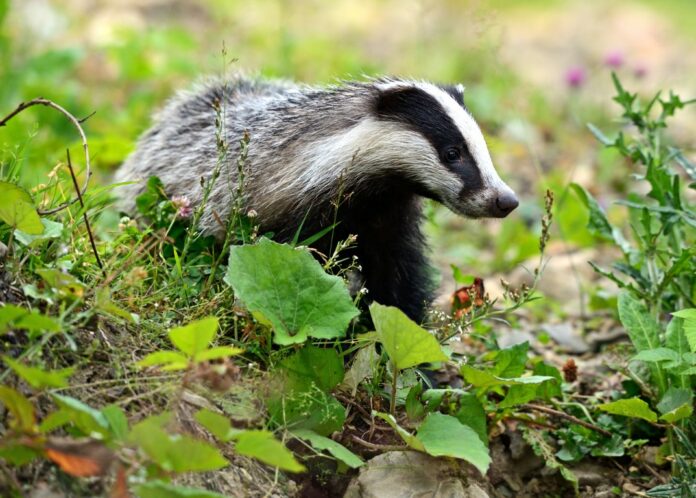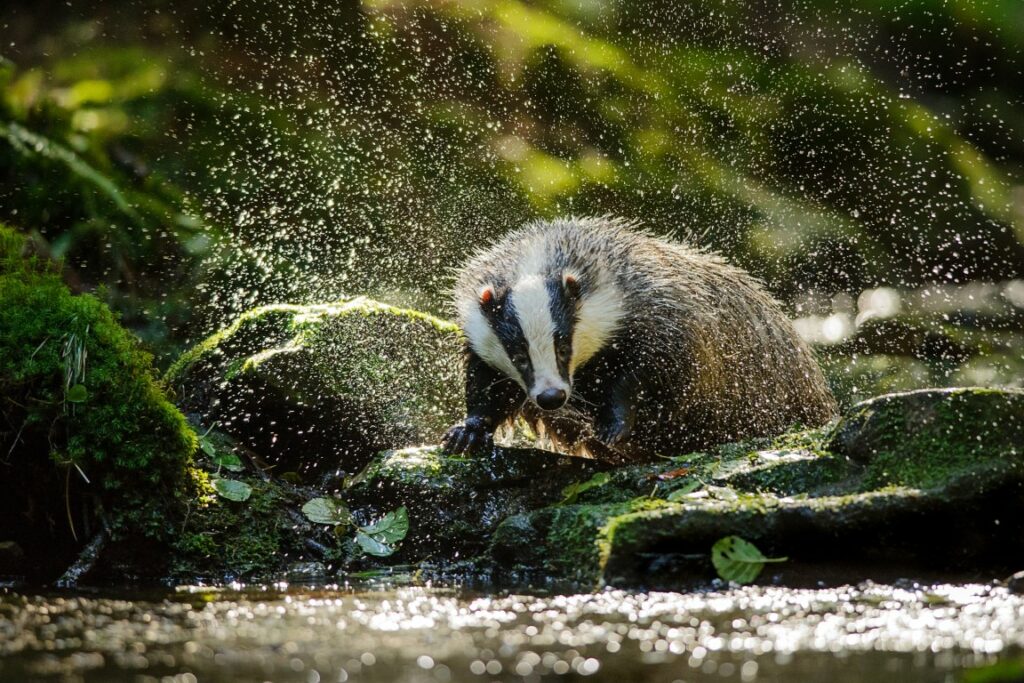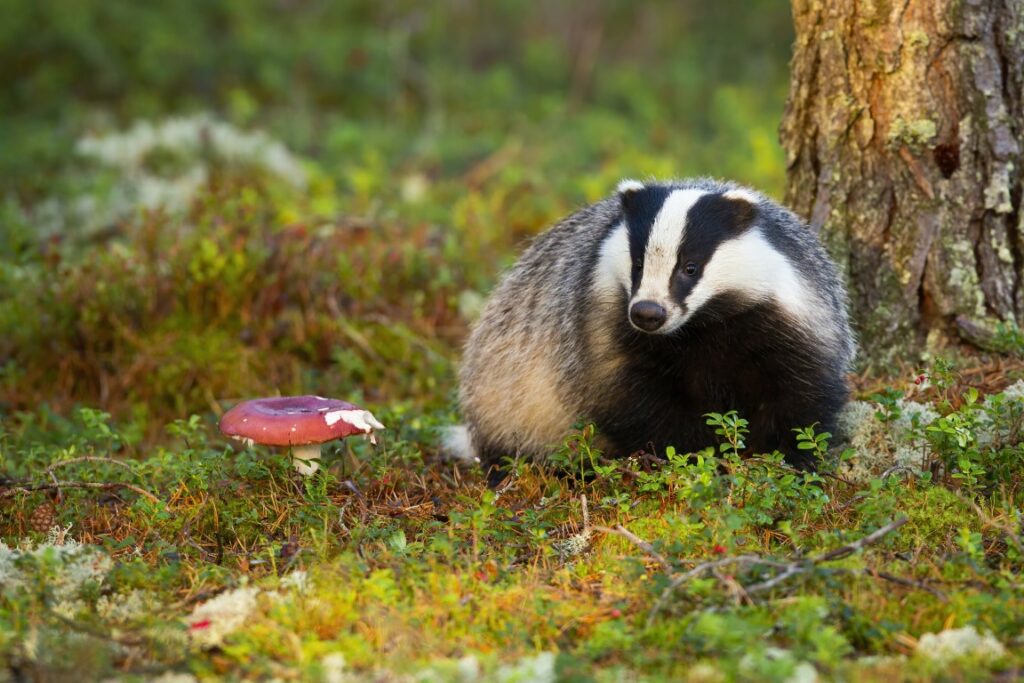
Adorable european badger, meles meles, sniffing in the middle of mountain cranberry moorland during golden hour. Cute badger and mushroom. Forest nocturnal animal out of its hole on sun.
What does a badger eat?
Table of Contents

Indeed, considered a pest animal by its many detractors, it is hunted like a common vegetable garden thief. However, the badger finds its food in its natural environment throughout the year! Omnivorous, it is able to feed throughout the seasons without the need to steal a few vegetables from the gardens.
Meet the badger and discover its very varied diet!
The badger, an easily recognizable animal

A special physique
In the Mustelidae family, the badger is the second largest species, just behind the wolverine.
It is recognizable by its white head and the two bands of black hair that start from its muzzle, pass through its eyes and go up to its ears. The rest of his body is grey.
Rather stocky, it measures on average 90 cm long, with its 20 cm tail included, for an average weight of 12 kg, and a size oscillating between 25 cm and 30 cm.
A burrowing animal
The badger’s head is conical in shape, typical of those species that search the ground to find food and live.
Its legs are very powerful and have large claws. They allow it to scratch the earth to make its burrow and to find its food.
If his eyesight is rather poor, his sense of smell and hearing are excellent!
What does a badger eat on sunny days?
The summer season starts in the spring. At this time of year, nature comes back to life, and food becomes easier to find than in winter!
The badger roams the meadows, or even in the fields of crops in summer, to look for food.
When the badger digs its tunnels, luck can smile on it by putting small rodents, such as voles or moles, in its path.
He can also find vipers, and snakes in general. Immune to their venom, he tastes them without risk.
A little smaller but equally appreciated, snails and slugs complete its diet. Not to mention insects and larvae!
Badger diet in autumn
When temperatures start to drop, badgers tend to take refuge in forests.
A poor climber, he is not able to climb fruit trees to find food. And as meat becomes scarcer, the badger then directs its choices towards plants and mushrooms.
During this period, it is not uncommon for them to go snooping in vegetable gardens, if they are located close enough to the forest. Carrots, beets, celery… Root vegetables are so mouthwatering! This explains its reputation as a pest.
What food for badgers in winter?
Although it does not hibernate, it only ventures outside when needed. As food is less abundant, it reserves its strength to dig the earth and feed on earthworms.
Thanks to its fat reserves accumulated during the summer, this frugal diet is enough for it to get through the winter, while waiting for the return of sunny days and the small carnivores that are so good to eat!
Is the badger really a pest?

While some gardeners tend to systematically answer yes, this is not entirely true. On the contrary!
Thanks to its varied diet, it helps regulate the number of rodents and insects that can ravage entire crops!
A few nibbled vegetables are a small price to pay for such crop protection work.
In addition, by digging burrows and galleries, it helps to aerate and enrich the soil.
The burrows that the badger leaves behind do not remain uninhabited for long. Rabbits and foxes, less efficient than him when it comes to digging, take up residence there.
Despite this, humans remain one of the greatest threats to badgers, whose predators are usually lynx, dogs, foxes or eagles.
Although it is very rare to come across a badger in the middle of the day, an encounter is always possible when night begins to fall.
Very fearful, the badger prefers to flee rather than attack. And although it is omnivorous, you are not one of those delicacy dishes!
Now that you know more about this important animal that is very active in biodiversity, you may become one of its most ardent defenders!


